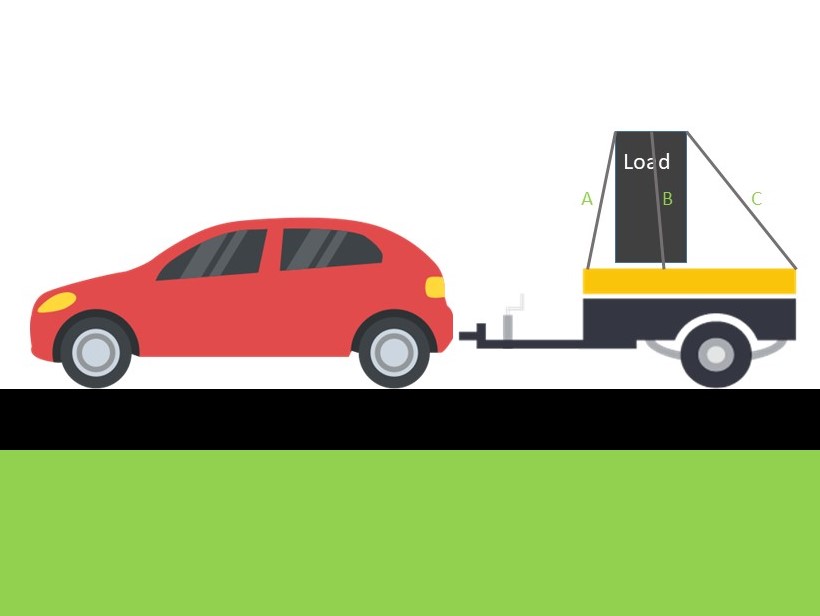Securing a load on a trailer
Loads on a trailer should by securely strapped down to prevent the load from falling overboard. The straps should be strong enough to ensure the load does not move or that the straps dont break during a sharp turn or hard break.
- Strap load down: Make sure the cargo is properly secured with a rope and tentioner. If the rope is thin consider doubling the rope
- Add rubber/ planks / spacers: You can add additional items such as planks or spacers in the empty areas of the trailer to ensure the object does not move.
- Remove or fix any loose items from the trailer: If any items do fly of from the trailer onto the road, you must pick it up. If its took heavy to remove you must properly mark it with a flag or any manner possible for other road users to see
- Towing a caravan or large cross sectional object:When traveling with a caravan or a load that is large and flat (Like a bed, or wood plank), extreme caution is required in heavy winds. The object flat surface can act as u big wind sail.
- Secure the load over the axle: The best place for the load is over the car or trailer axle. This reduces the efect of High or low ball pressure.
Trailer rope / strap strength

- Rope A (Forward direction) strength: 80% of the cargo weight
- Rope C (Backward direction) strength: 50% of the cargo weight
- Rope B (Sideways direction) strength: 50% of the cargo weight
Example: How to calculate trailer Rope / strap strength
You loaded an item onto a trailer with a weight of 50kg. What should the strength be of each rope
- Rope A (Forward direction) strength: 50kg * 0.8 = 40kg
- Rope C (Backward direction) strength: 50kg * 0.5 = 25kg
- Rope B (Sideways direction) strength: 50kg * 0.5 = 25kg